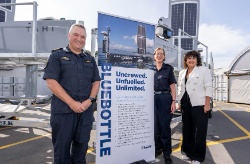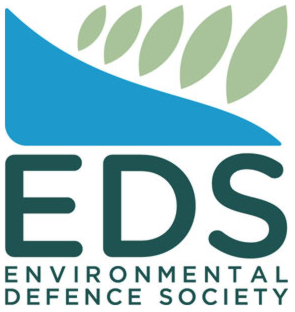Council Surveys Sounds’ Seafloor

The NIWA research vessel Ikatere has been surveying Te Hoiere/Pelorus Sound to help the Council better understand its seafloor biodiversity. The survey's first part began in mid-March and was completed last week.
Council’s Principal Coastal Scientist, Oliver Wade, said that a critical aspect of managing the marine environment is gaining a thorough understanding of its various components.
“This information can be used to identify significant habitats and areas of biodiversity, enabling the Council to explore ways to preserve these regions.
“It can also help inform policies directly related to the coastal marine area, whether involving the placement of marine farms or the locations where people can anchor a vessel. It can also enhance our understanding of the impacts of land use on the marine environment.”
Mr. Wade said that land erosion, which is exacerbated by storms over time, has a significant impact on the seafloor.
“We are observing significant sedimentation from the land due to erosion, not only from the initial clearance but also from ongoing activities. This material settles and accumulates on the seafloor, creating a lasting legacy that doesn’t disperse. In many areas around New Zealand, sediment poses a major problem.”

Marlborough District Council is funding the work, which is managed by a steering committee comprising Council, DOC and Fisheries New Zealand with the support of Ngāti Kuia and Ngāti Koata. Ngāti Kuia gifted the project the name Te Hoiere Ine Parumoana.
NIWA Marine Ecologist Dr. Mark Morrison says the survey utilised the towed camera system CoastCam to map animal species, habitats, and geology.
“As part of this systematic sampling, we sought new areas of important habitats, including those that support ecosystem functioning, biodiversity and fisheries. We also conducted limited sampling with other gear to determine if juvenile snapper nurseries, previously sampled in the 1980s, still exist today, including areas now covered by mussel farms.”
This survey is the third step in the Te Hoiere Ine Parumoana project. The information collected will help inform the analysis of seafloor mapping data collected by Council and LINZ in 2020. It will guide the modelling of seafloor ecology and understanding of how it has changed over time.
To learn more about seafloor mapping, please visit: www.marlborough.govt.nz/environment/coastal/seabed-habitat-mapping


 Gordon Campbell: On Why The US Stands To Lose The Tariff Wars
Gordon Campbell: On Why The US Stands To Lose The Tariff Wars Te Pāti Māori: Ngarewa-Packer - Fast-Tracking Seabed Mining Ignores Māori Opposition And Environmental Precedent
Te Pāti Māori: Ngarewa-Packer - Fast-Tracking Seabed Mining Ignores Māori Opposition And Environmental Precedent New Zealand Defence Force: Defence And Customs Strengthen Maritime Security With Uncrewed Surface Vessels
New Zealand Defence Force: Defence And Customs Strengthen Maritime Security With Uncrewed Surface Vessels SPCA: Huge Win With New Dog Tethering Regulations
SPCA: Huge Win With New Dog Tethering Regulations Community Housing Aotearoa: Ngā Wharerau o Aotearoa Says New Partnership Model Helping Ensure Right To A Decent Home Is Realised
Community Housing Aotearoa: Ngā Wharerau o Aotearoa Says New Partnership Model Helping Ensure Right To A Decent Home Is Realised Greenpeace Aotearoa: Babies At Risk Due To Nitrate-Contaminated Drinking Water In Ashburton District
Greenpeace Aotearoa: Babies At Risk Due To Nitrate-Contaminated Drinking Water In Ashburton District Driving Change Network: Response To Government’s Proposed Driver Licensing Changes
Driving Change Network: Response To Government’s Proposed Driver Licensing Changes


